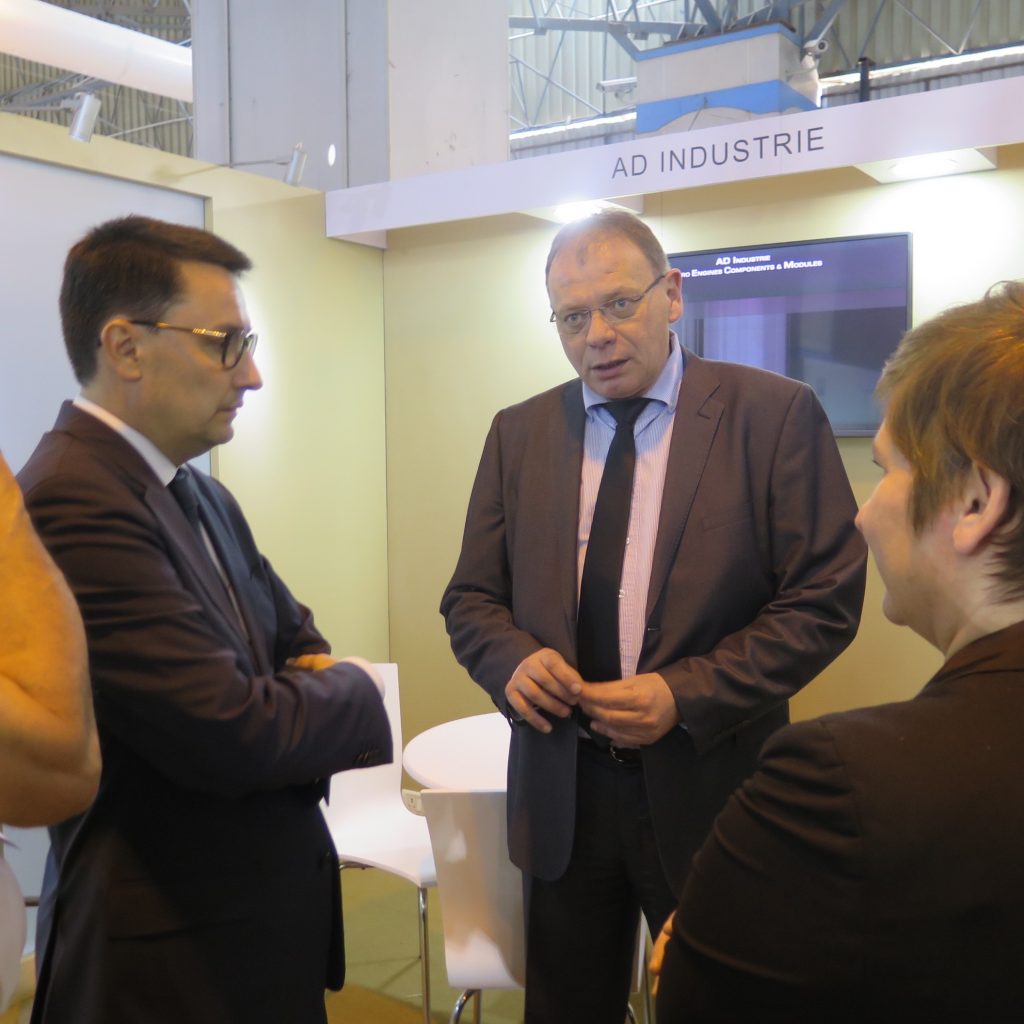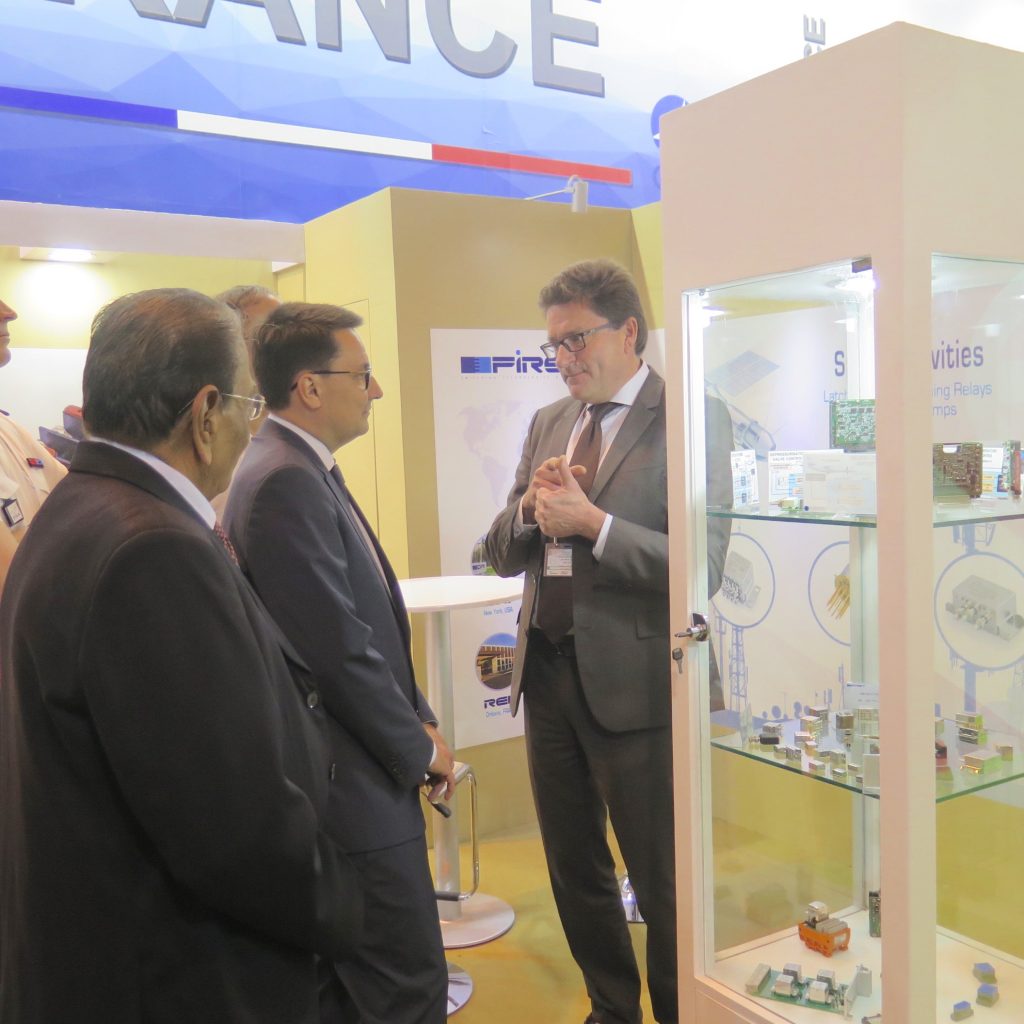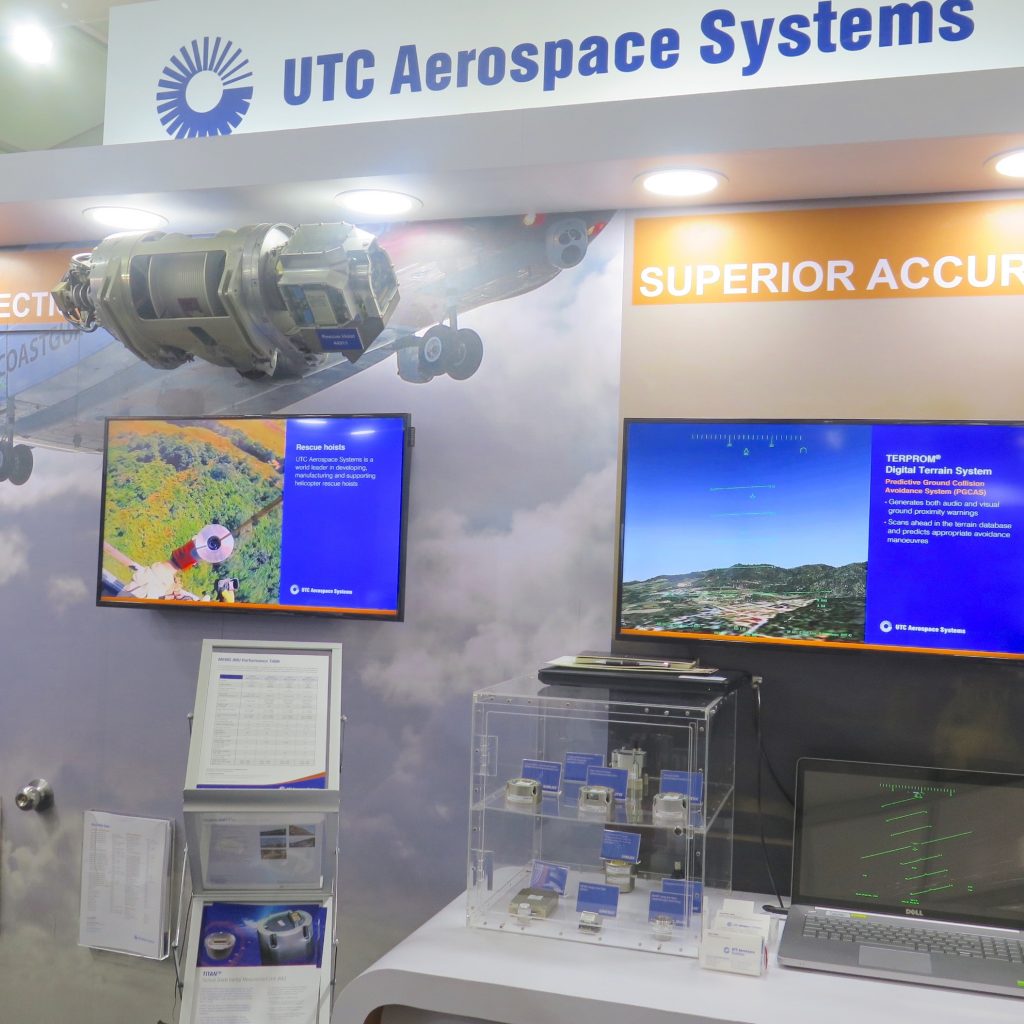Aero India 2017
By Joseph Roukoz
The Defence Minister of India Manohar Parrikar and Ashok Gagapathi Raju jointly inaugurated the 11th edition of the biannual international Aerospace and Defence exhibition very well organised this time « Aero India » which got off to a colourful start at the Air Force Station Yelahanka in Bangaluru from 14 to 18 February 2017.
« It has time and again proved to be a brilliant business investment and display hub for national as well as international firms. We encourage Indian companies in defence manufacturing but we would also to encourage foreign companies. The government is working on ways to increase private player participation in defence manufacturing. The government will encourage manufacturing design as well as innovation in the field of defence manufacturing. Conditions have never been better than now for defence manufacturing in India and I hope it will make way for technical enhancement », Parrikar said.
Aero India has become one the most sought after exhibitions in the Asian region in terms of participation from across the globe (USA, EU, Russia, Israël, etc ). The event is being organised and conducted by the Defence Exhibition Organisation (DEO). The highlights of this year’s show are the participation from 270 Indian companies and 279 foreign companies, making a total of 549 companies, and 72 aircraft, the organiser said. Delegations were in majority Indian except for the UK delegation lead by the UK Minister of Defence Procurement.
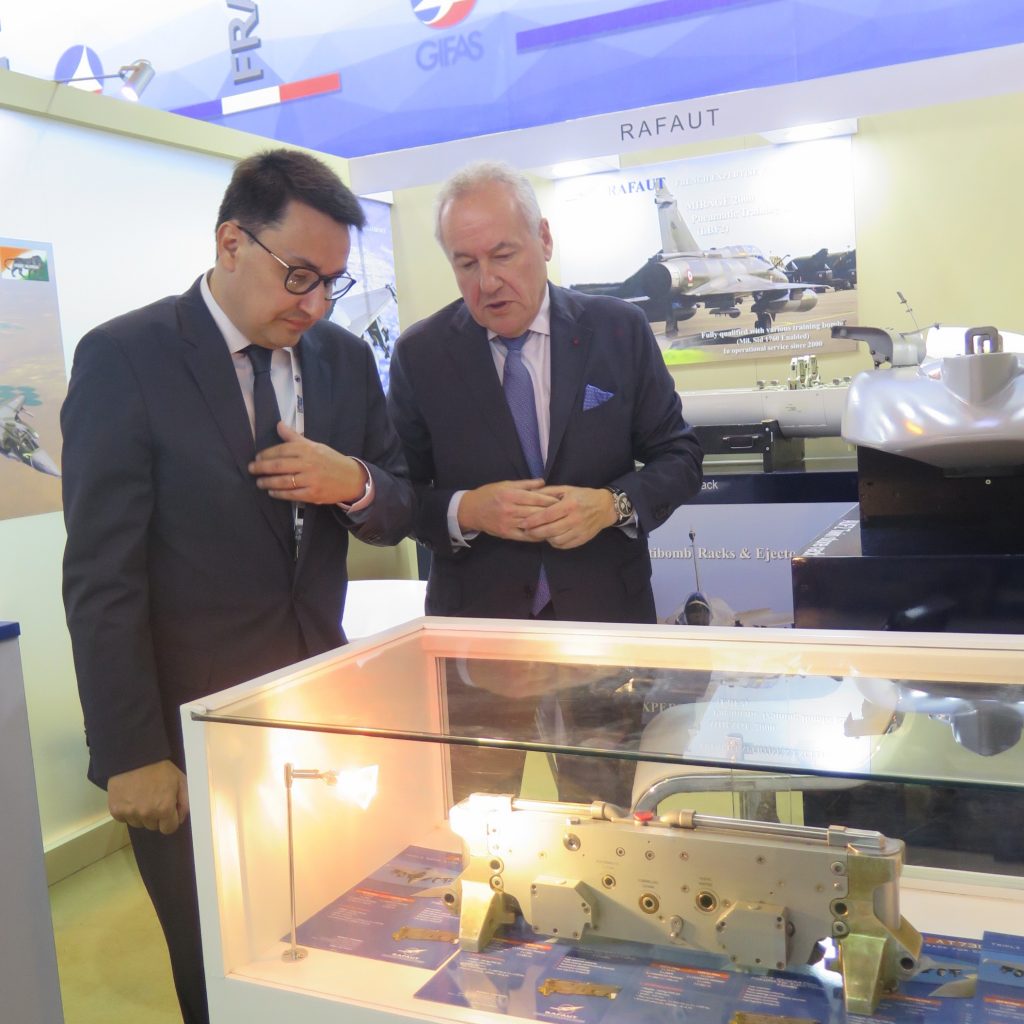
The French pavilion, under the GIFAS label, hosted more than 40 French companies, like the AD Industrie group specialised in mechanical engineering and hydraulics or Alkan specialized in aeronautical equipment, weapon carriage and ejection equipment Dassault Systems, the 3DEXPERIENCE company, partnered with the world’s leading Aerospace & Defence companies for over 30 years in developing products to exacting requirement while incorporating complex technologies and mitigating risks. Add to this many other we don’t have enough space to speak about them.
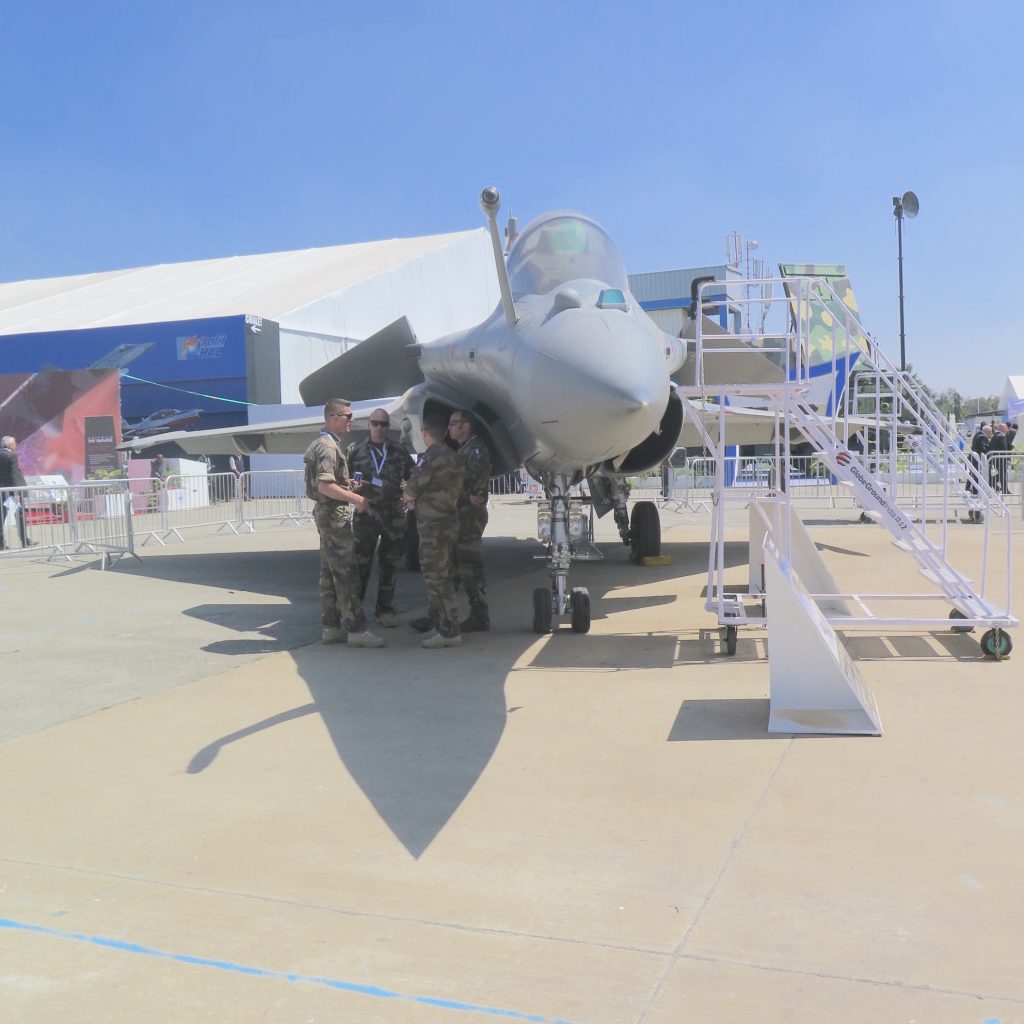
The Dassault Aviation group had a large presence at Indian airshows. The Indian Air Force has been flying Dassault aircraft since 1953 and the recent contract to acquire 36 Rafale, signed last September is a continuation of this strategic, technological and industrial success story. In the field of business aviation, Indian companies are also turning to Dassault, with twenty Falcon already in service and promising prospects for the future. This year Dassault Aviation participated in Aero India with three French Air Force Rafales performing daily flying displays and with a Falcon 8X, the flagship of the Falcon range, as well as a Falcon 2000LXS bizjet.
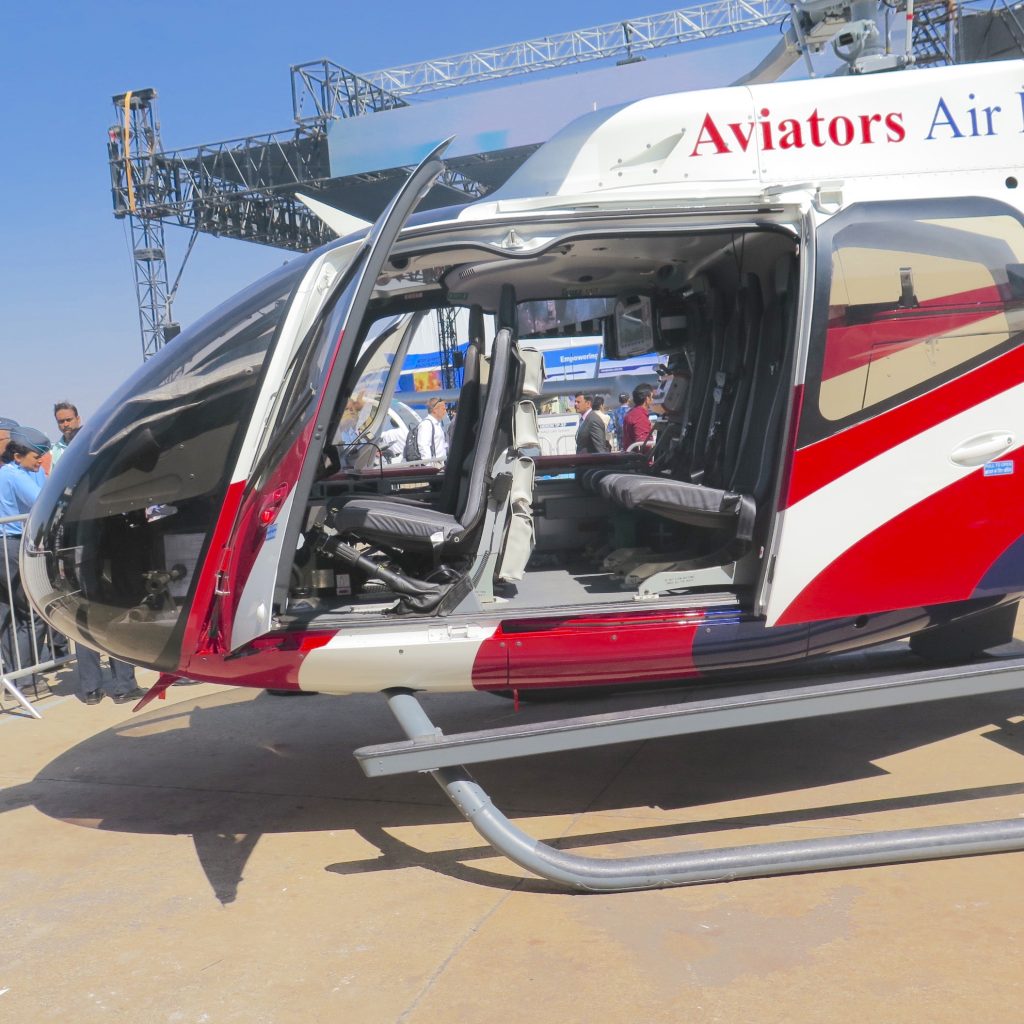
Airbus presence relied on a H130 helicopter, fully kitted out with specialised emergency medical care equipment demonstrated its life-saving guise. Airbus has delivered three single-engine H130 helicopters to Bangaluru-based Aviation Air Rescue for its air ambulance service. The potential of Airbus & Inia partnership is growing bigger and this was exhibited in the form of scale models of the C295W military transport aircraft and the AS565MBe Panther helicopter.
As part of the Avro 748 replacement programme of the Ministry of Defence, Airbus will support Tata Advanced Systems in setting-up a final assembly line for the C295W in India. Once the contract is awarded. Airbus has tied-up with Mahindra Defence to create India’s first private sector champion for manufacturing military helicopters. Making in India the global hub for Panther production in India for the domestic market as well as for export — under a proposed Naval Utility Helicopter programme. The scale model displayed an EC725 now marketed as the H225M, a machine which is under negotiation for the Indian Coast Guard‘s requirement for 14 shore-based helicopters. Same for the fuel efficient A320neo commercial aircraft: there are around 590 A320neo on order from Indian companies which should be delivered one per week over the next 10 years.
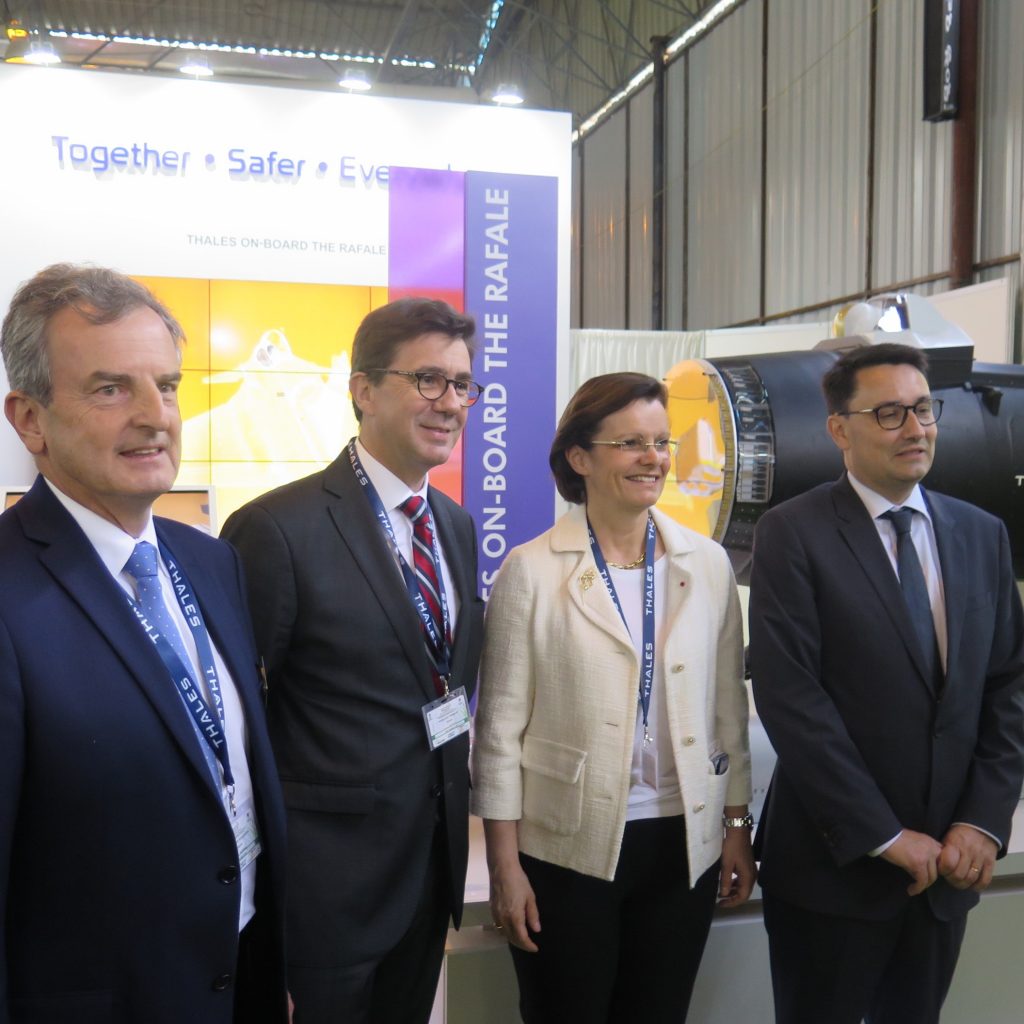
Thales showcased at Aero-India a large range of radars like the Sea Master family and all the radar Rafale RB2E radar. The latest UAV Spy’Ranger mini surveillance and reconnaissance drone was also on exhibit. This new Unmanned Aerial Vehicle (UAV) has been chosen by the French Defence Procurement Agency DGA to equip the French Armed Forces.
The first day of Aero India 2017, Thales and Bharat Dynamics Limited (BDL), a Government of India enterprise, have signed a Memorandum of Understanding to assess the opportunity for the transfer of technology of the STARStreak missile capability to India with the support of the Government of the United Kingdom (UK). The MoU was signed in the presence of UK Government representatives on the UK Government stand. Through this MoU, Thales and BDL seek to jointly offer a “Make in India” solution to help service growing international demand for this product.
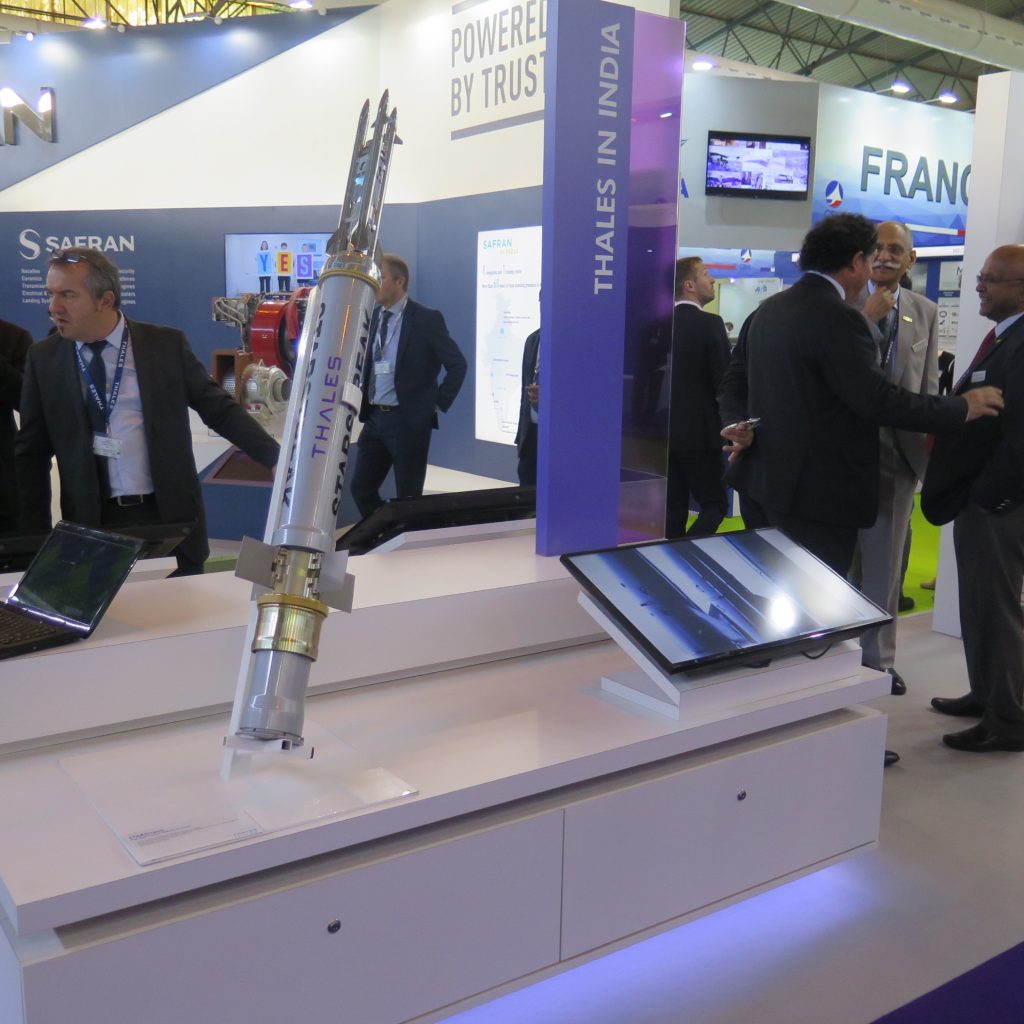
The STARStreak missile is in service in the UK army and has been procured by the defence forces of a number of countries worldwide. The fastest missile in its category, STARStreak is unique due to its three laser-guided darts, which cannot be jammed by any known countermeasure. It has the capability to defeat any air target – even armoured helicopters – as the last line of defence. Thales is investing in the transfer of technology to India for the STARStreak missile. In the spirit of cooperation between the two countries, including under the Indo-UK Defence Equipment Cooperation MoU, this initiative has the full support of the UK government. The association will play a strategic role not only in supporting the “Make in India” vision of the Indian government but also in giving a boost to the excellent bilateral relations between India and the UK.
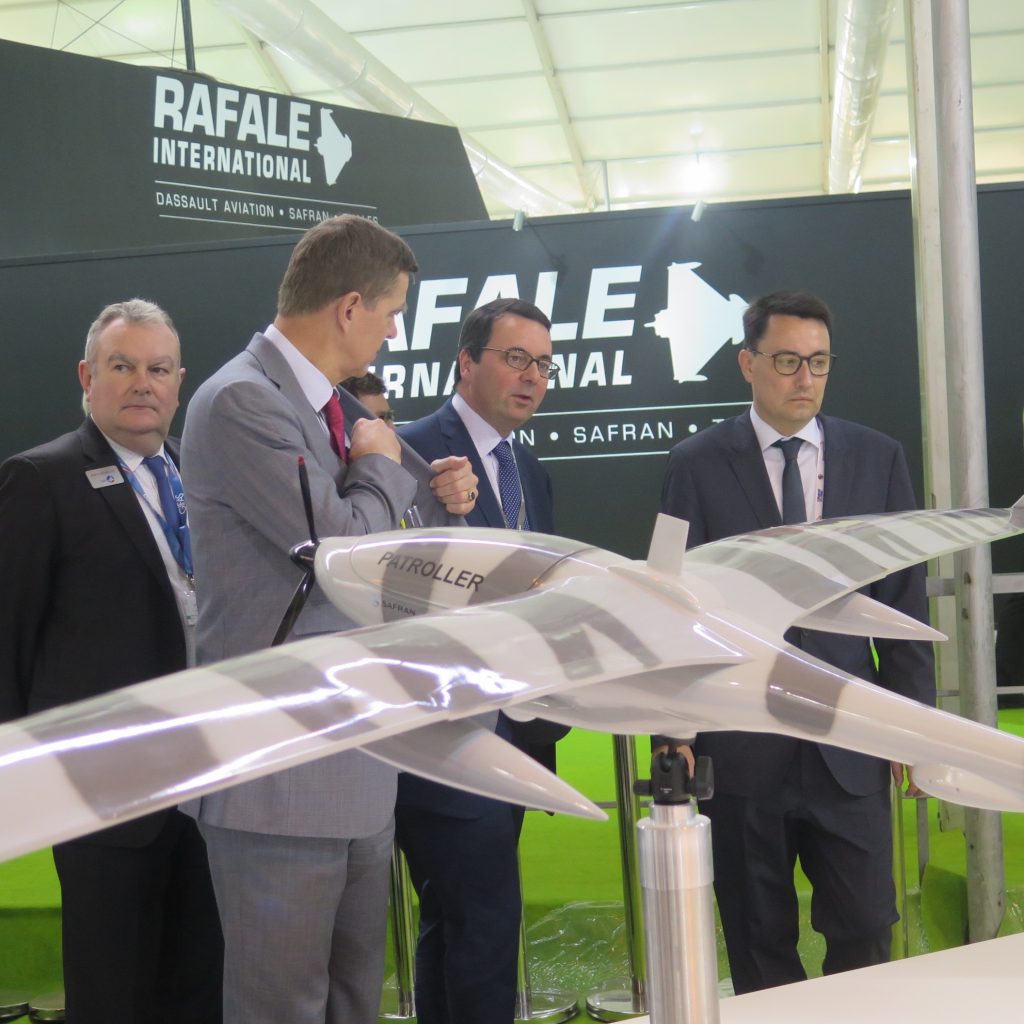
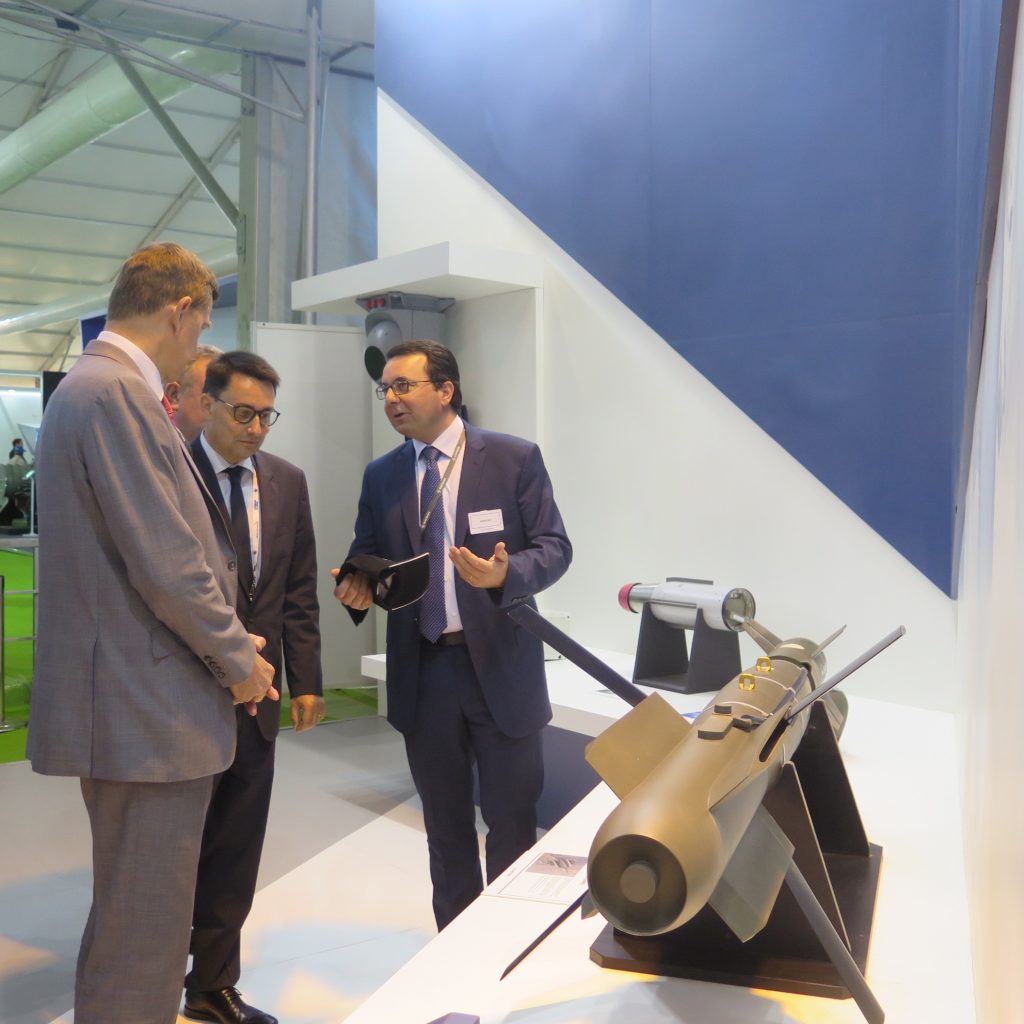
In the booth of Safran at Aero India we discovered a model of the Patroller a new tactical system, offering a high-value-added intelligence, monitoring and targeting solution. Its design is based on the feedback from of Sagem’s Sperwer tactical UAV in Afghanistan, deployed by the forces of three NATO countries: Netherlands, Canada and France. Safran showcased also the AASM missile air to ground very well known in the conflict in Irak and used by the French Air Forces, M88 engine used in the Rafale from Dassault Aviation. During Aero India the input was placed on the helicopter engines to sustain the Indian demand for helicopters. The relationship between HAL and Safran Helicopter engines dates back to 1962 with an agreement to produce the Artouste IIIB turboshaft that powers an Indian version of the SNI Aérospatiale Alouette III known locally as Chetak. More than 600 of this engines were produced in India. And know Safran has been selected to power all subsequent HAL-developed rotorcraft. Safran also powers and/or equips 65% of all Indian aircraft and helicopters, and is a key supplier of crucial systems and equipment for the Rafale, including its two afterburning M88 turbofan engines.
A new step has been taken in the domain of support and services with the opening of HE-MRO service centre with HAL. It has been inaugurated in October 2016 by India’s Defence Minister Manohar Parrikar, Helicopter Engines MRO Pvt Ltd (HE-MRO) is a joint venture of Safran and HAL, dedicated to supporting helicopter engines in service with domestic and international operators, primarily in the Indian Air Force and Army. The new facility will provide Maintenance Repair and overhaul (MRO) services for Safran TM33 and HAL Shakti engines installed on HAL-built helicopters and will become active in the coming months with an initial capacity to repair 50 engines a year, before eventually ramping up to 150.
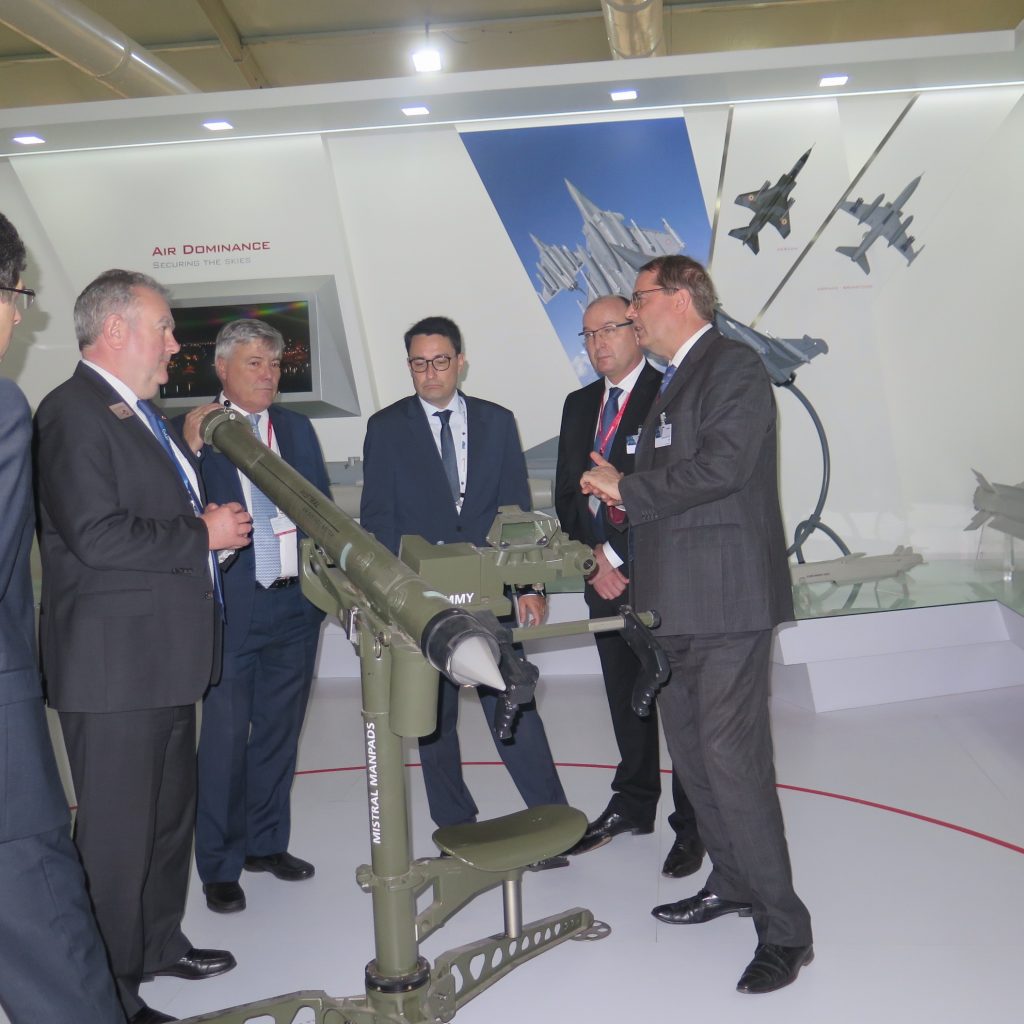
MBDA displayed at Aero India a wide range of products to demonstrate its unique ability to meet the operational needs of all three of India’s armed services, the main emphasis was placed on the company’s air-launched missile systems. The Rafale contract now having been signed, MBDA will focus on the weapons that will fully optimise the multi-role operational capabilities of this fourth generation combat aircraft.
The Meteor is a six-European nation programme that will provide the key future BVR air-to-air armament for Europe’s new generation of combat platforms including of course the Rafale. This missile very long range combined with its ramjet-induced speed results in a weapon that has an unequalled No Escape Zone. The Scalp/Storm Shadow, which is in operational service on the French Air Force Rafale aircraft (as well as with other European air forces) and which has proved its unerring and unmatched ability to combine very long range with devastating target effect during combat operations carried out by the air forces of the UK, France and Italy. The Scalp is a major requirement for a modern air force. The ability to deliver a precision strike against high-value targets such as well protected control bunkers/centres, key infrastructures and military installations from a safe stand-off distance is crucial in the early days of a conflict as was shown in Iraq and Libya.
The Mica is being delivered for the IAF’s Mirage 2000 upgrade. It is also a weapon system closely associated with the Rafale. this is the only missile in the world featuring two interoperable seekers (active radar and imaging infrared) to cover the spectrum from close-in dogfight to long beyond visual range. The ASRAAM is an important element of the upgrade programme for the IAF Jaguar bomber fleet. Te speed of this short range air-to-air missile not only provides safe separation from the Jaguar’s above-wing pylons, it also guarantees “first shot-first kill” to avoid getting involved in a dogfight. The Brimstone goes from strength to strength with trials and combat deployment clearly demonstrating the unmatched capabilities of this weapon in meeting the operational challenges of today. with its dual millimetric wave radar and semi-active laser (SAL) seeker the weapon up to now only selected by the RAF gives the pilot a great deal of flexibility.
On the 13th of February, one day before opening the show, MBDA in recognition of the path-breaking initiatives of the government of India to target indigenisation of the Defence Sector under the Make in India initiative, Larsen & Toubro (L&T), India’s multinational engineering conglomerate and private sector defence major, and MBDA, a world leader in missile systems, have set up a joint venture (JV) to develop and supply missiles and missile systems to meet the growing potential requirements of the Indian armed forces. The Joint Venture Company was announced on 13 February one day before opening the show, named ‘L&T MBDA Missile Systems Ltd’, will operate from a dedicated work centre, which will include pyrotechnical integration and final checkout facilities. It is expected to be incorporated in the first half of 2017 after necessary approvals. L&T will own 51% of the Company and MBDA, 49%, fully complying with India’s Foreign Direct Investment (FDI) policy norms. The JV will be registered in India and conduct business as an Indian Company, subject to Indian laws. The JV would focus on business opportunities in the Missiles and Missile Systems domain and target prospects under the Buy (Indian – IDDM), Buy (Indian) and Buy & Make (Indian) categories of Defence Procurement. The decision to formalise this partnership, a key milestone for both L&T and MBDA in their long term relationship, was made after extensive evaluation and identifying the strong synergy between the two organisations. L&T and MBDA have collaborated and partnered on co-development and production of major subsystems involving complex technologies and sophisticated weapon systems such as MICA missile launchers and airframe segments including control actuation units for Indian MoD orders.
Having developed a strong working relationship and built mutual trust, L&T and MBDA are convinced that it is the right time for the relationship to mature into a JV, given the conducive policy environment in the defence sector in India. Both JV partners have a proven track record as trusted suppliers to the Indian Armed Forces – providing critical weapon systems and defence solutions across land, sea and air domains.
To begin with, the JV company will look to develop and supply fifth generation Anti-Tank Guided Missiles (ATGM5), missiles for Coastal Batteries and high-speed target drones. L&T has been delivering a range of launch systems, fire control systems and airframes/sub-systems for various indigenous weapon (Missile / Rockets / Torpedo) programmes as development partners and production agency to DRDO and DPSUs. By combining our manufacturing and system integration capabilities and track record with MBDA’s technological excellence, we now look forward to delivering complete Missile Systems, hitherto imported, to meet the requirements of the Indian armed forces as required under DPP 2016.
Mrs Baldwin, the Minister for Defence Procurement, joined twenty UK companies at the aerospace exhibition, held at Air force Station Yalahanka. Showcasing some of the most innovative technology in the defence, aviation and security sections, these cutting edge businesses will be forging long-lasting industrial partnerships and joint ventures with Indian companies. Mrs Baldwin was accompanied by the British High Commissioner to India, lieutenant General Mark Poffley, Deputy Chef of Defence Staff or Military Capability in the UK Ministry of Defence (MOD) and Sophie Lane Regional Director for India in the Departement of International Traders Defence and Security Organisation (DSO).
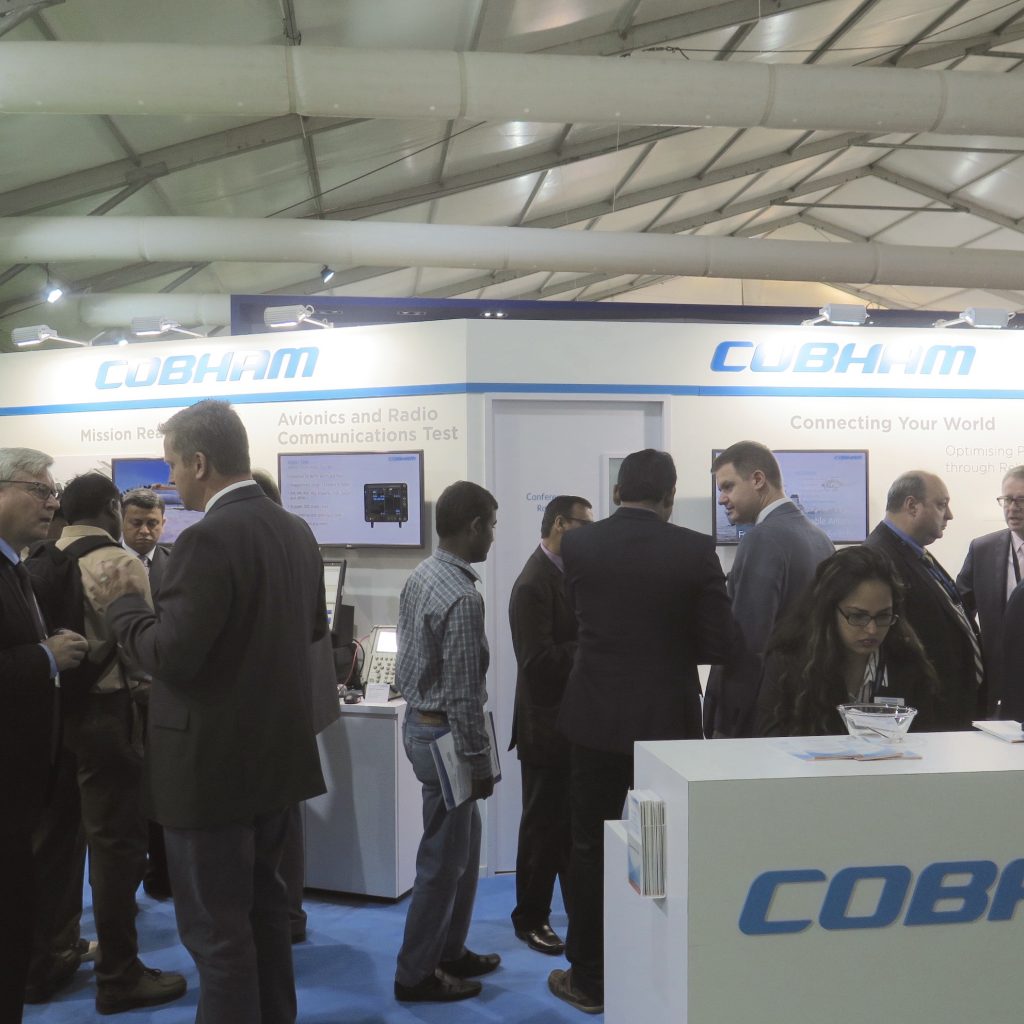
Between the British companies present in the Britsh pavilion we can mention Cobham that produces the Audio & Radio Control Display Unit, an intuitive device permitting quick access to navigation, communication, Air Traffic Control, and identification radios on civil, tactical military platforms. And also Aviator 300: a compact, lightweight system that offers cost-effective SwiftBroadband capabilities to the widest range of airframes flying today. Let’s mention also UTC Aerospace Systems which has a long and respected heritage in the design and development of inertial sensors and today specialises in Micro Electro-Mechanical Systems showcasing in Aero-India the Titan Tactical Grade Inertial Measurement Unit (IMU).
BAe Systems displayed for the first time its Advanced Hawk. BAE has established a partnership with Hindustan Aeronautics LTD. HAL modified the Hawk’s original wing by fitting it with combat flaps and active slat wing considerably improving the aircraft’s performance during landings and take-offs, as well as during sustained and instantaneous turn rates compared to the Hawk Mk 132. There have been several other changes to the original Hawk. The new Rolls-Royce Adour 951 of 6.500 lbs thrust offers 13 % more power than the Hawk’s Adour 871 now with the IAF. The new aircraft will be able to handle smart weapons, as it will have a laser designator. The cockpit has been upgraded to have a large Area Display, a digital Head-up Display, a Ground Proximity Warning System and autopilot, a Trafic Alert and Collision Avoidance System, and a data link for communication with the ground with other aircraft. Sensors have been stimulated to keep costs down.
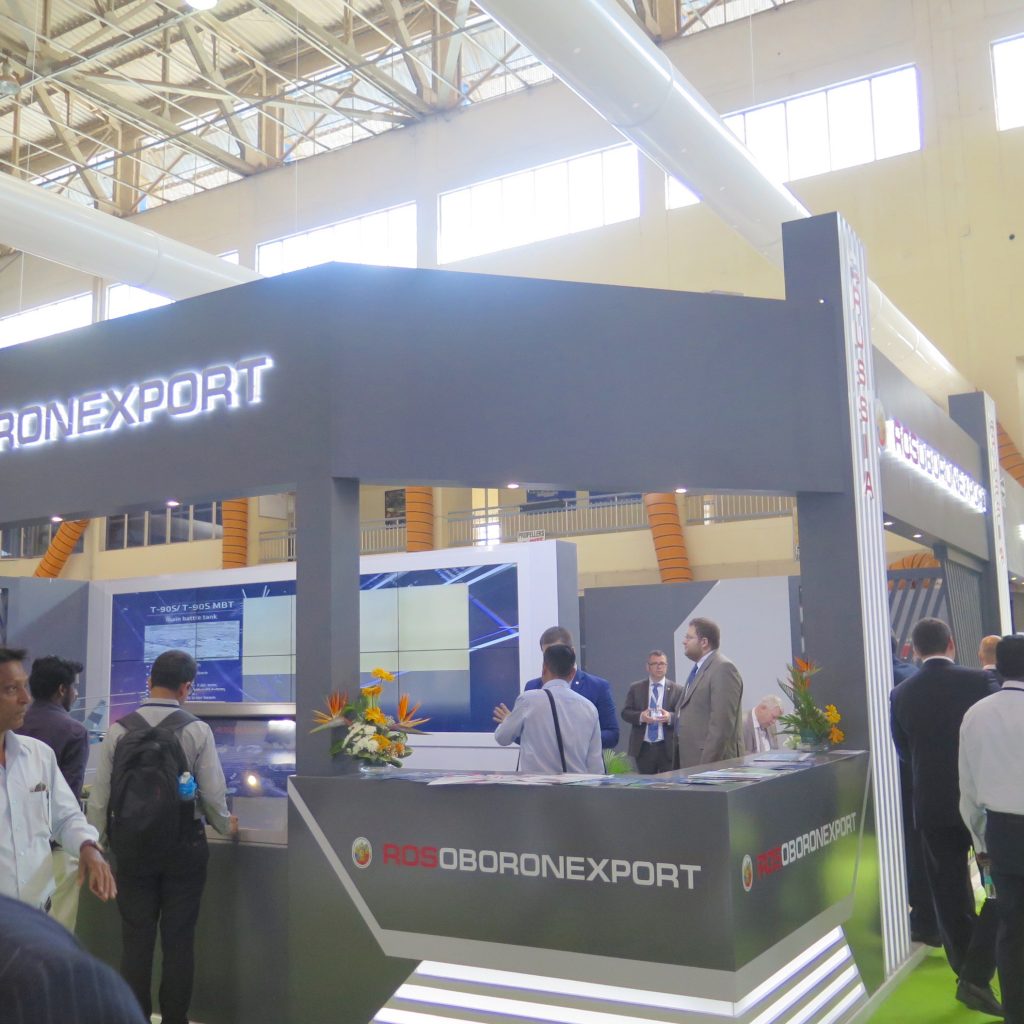
Rosoboronexport attended Aero India with fourteen Russian defence organisations and holdings companies. Their display occupied 940 square metres. Rosoboronexport specialists believe that the best regional prospects lie with the Su-30MKI, II-76-MD-90A, Be-200 multipurpose amphibious aircraft, Ka-226T light multipurpose day-and-night operation helicopter, Mi-26t2 heavy transport helicopter, Mi-28NE attack helicopter and Ka-52 attack and reconnaissance helicopter. Much of the equipment has been used by the Russian Armed Forces during the counterterrorist operation in Syria having proved its reliability, high quality and adequacy to the assigned missions.
Of equal interest for the foreign customers will be such air defence assets as the S-400 Triumph air defence missile system, Pantsir-S1 air defence missile/gun system, Tor-M2KM air defence missile system and Igla-S man-portable air defence system. Representatives of the regional armed forces were expected to show interest in the Russian counter-terrorism equipment, site protection systems and electronic warfare assets.
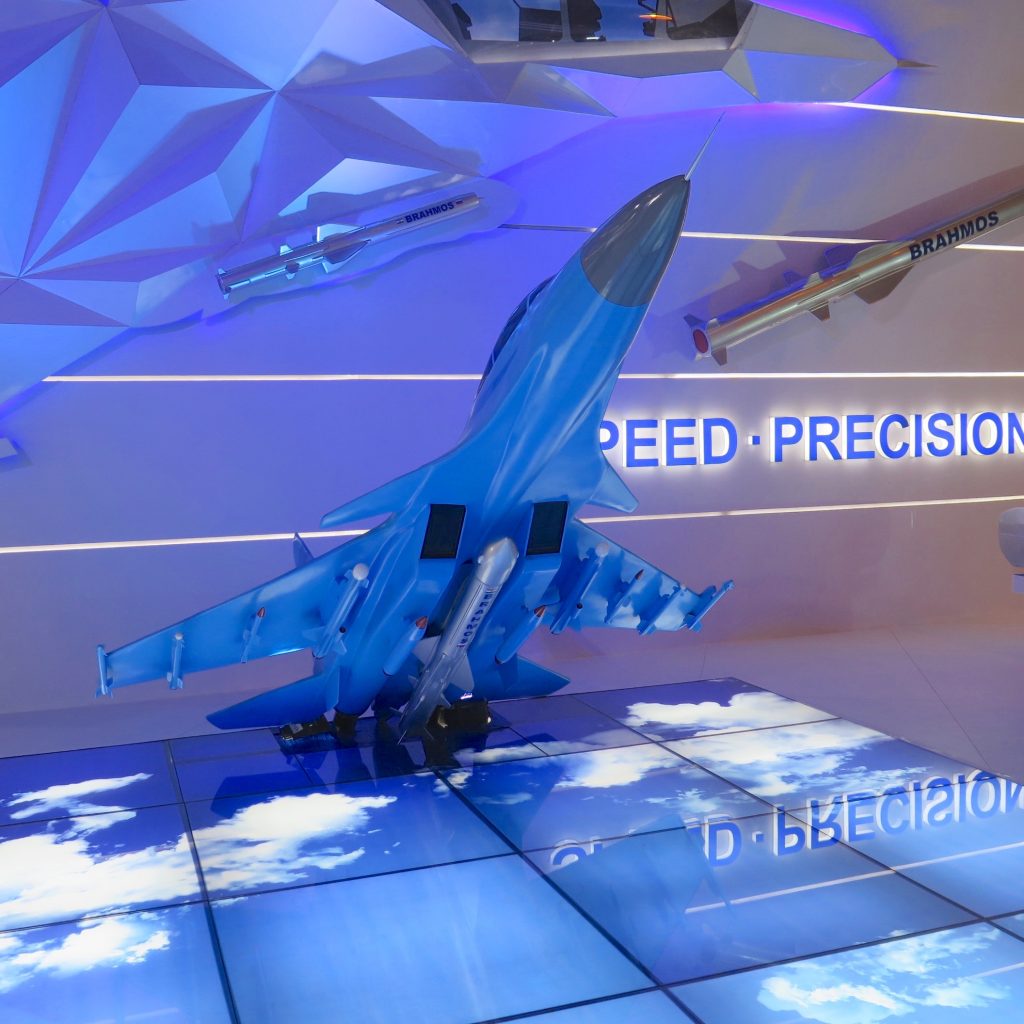
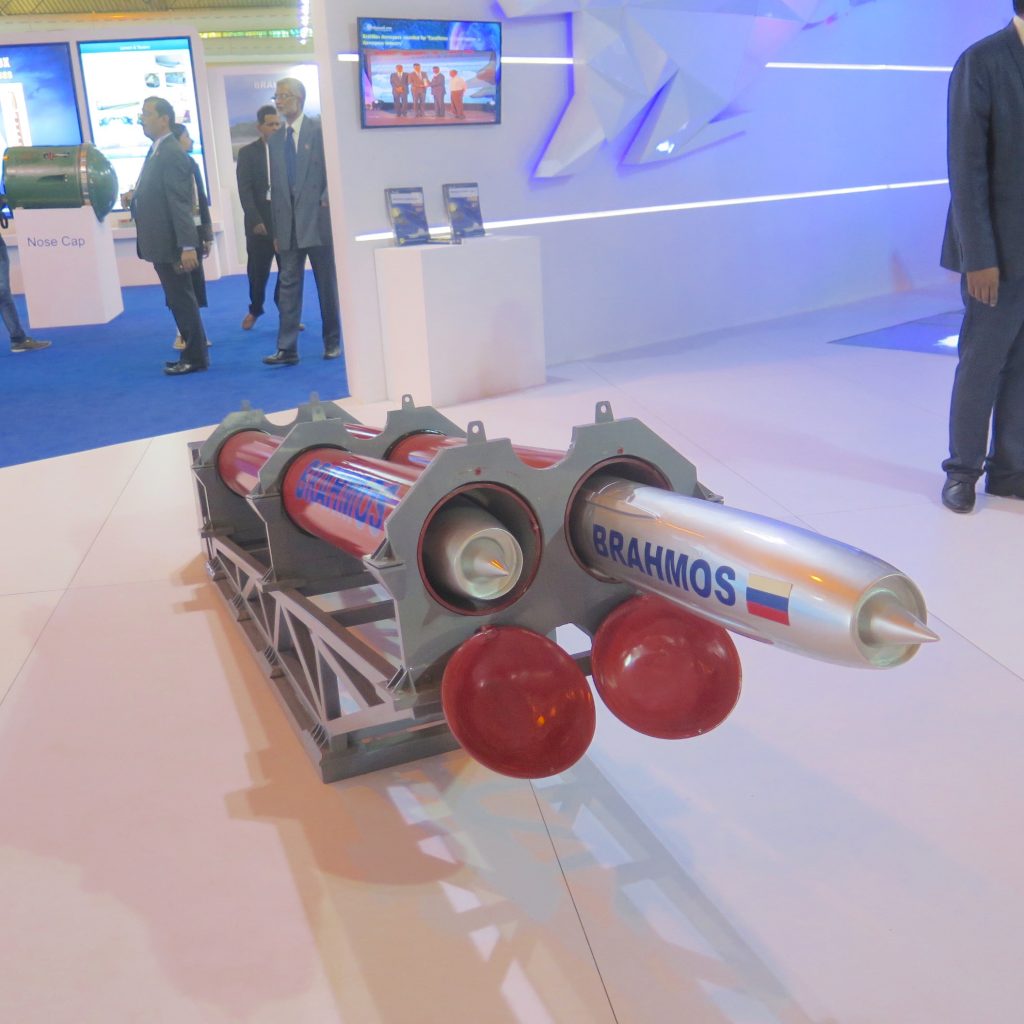
BrahMos display in Aero India a supersonic cruise missile with a fine combination of speed precision and power, has three times more velocity, 2.5 to 3 times more flight Range 3 to 4 times more seeker range and nine times more kinetic energy than any existing subsonic cruise missiles. The multi-platform, multi-target cruise missile, carrying a conventional warhead weighing 200 to 300 kg, is capable of flying up to 290 km at a top speed of 2.8 Mach.
BrahMos showcasing also the naval version in Aero India. This anti-ship variant of the BrahMos has already been successfully developed and deployed by Indian Navy. Several south-East-Asian and Latin American countries want to BrahMos, or have at least expressed interest in it, pariculary for the naval and coatal defense versions.
Israël occupied a big space in Aero India like Rafael present with the Spyder SR/MR, family of Short and Medium Range Air Defence, the Iron Dome, combat-proven active defence system against short range Artillery Rockets, C-Dome a naval defence system designed to protect combat vessels against a large set of modern threats. And also the Python 5 air to air missile and Spice family (2000, 1000, 250) missile for air to ground strikes. IAI and Kalyani Group signed during the show a memorandum to incorporate a Joint Venture Company (JVC) in India. As part of the MOU, IAI and KSSL are aiming to expand their presence in the Indian defence market and to build, market and manufacture specific air defence systems and light weight special purpose munitions.
Despite a drop in exhibitors of 25% and non-existent foreign delegations, unlike local delegations, Aero India remains an important date in the industry’s schedule for the importance of the hudge Indian market.//

